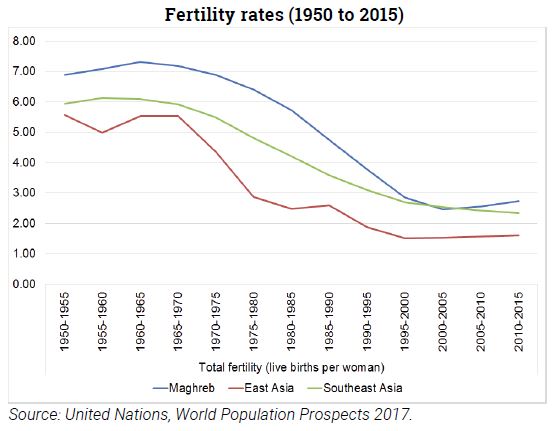Trésor-Economics No. 211 - Demographic challenges in the Maghreb countries
Following a decline in infant mortality, Maghreb countries entered a demographic transition phase in the 1940s and 1950s. A second phase began in the 1960s with birth planning and the subsequent fall in the fertility rate. The age pyramids of Algeria, Morocco and Tunisia have undergone rapid changes. This situation should be beneficial for them until 2050. The proportion of the population of working age will increase before ageing, as in developed countries.
The massive increase in the working age population could boost growth significantly in the Maghreb countries, provided they find a path to more inclusive and sustainable growth.
At present, the labour market is characterised by a high level of youth unemployment and a low integration level for women. The integration of young people into the labour market is hampered by an economic development model that fails to create enough jobs, coupled with training ill-suited to market needs and the lack of decent jobs in the formal sector. Although migration outflows ease the pressure on the labour market and improve current account balances, structural reforms such as those implemented by certain Asian countries in the 1970s and even in Europe would allow the Maghreb countries to better benefit from their demographic dividend.
Another medium-term challenge for Maghreb countries is the ageing of their populations by 2050, which will differ across countries. Addressing the impact of population ageing involves ensuring the financial sustainability of social protection schemes, considering reforms of how they are financed and run, in a context where intergenerational solidarity continues to play an important role.
